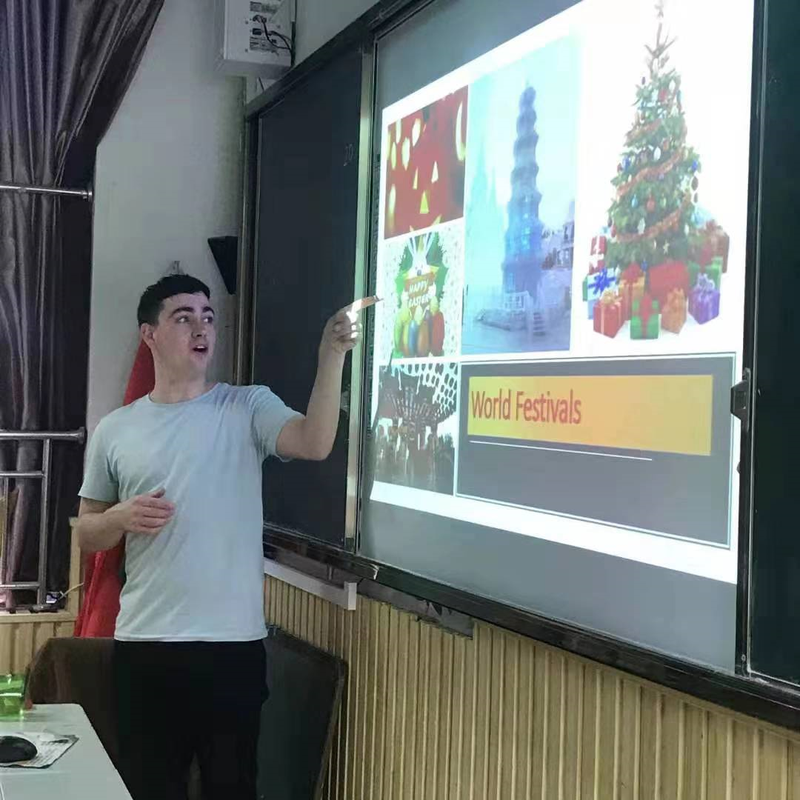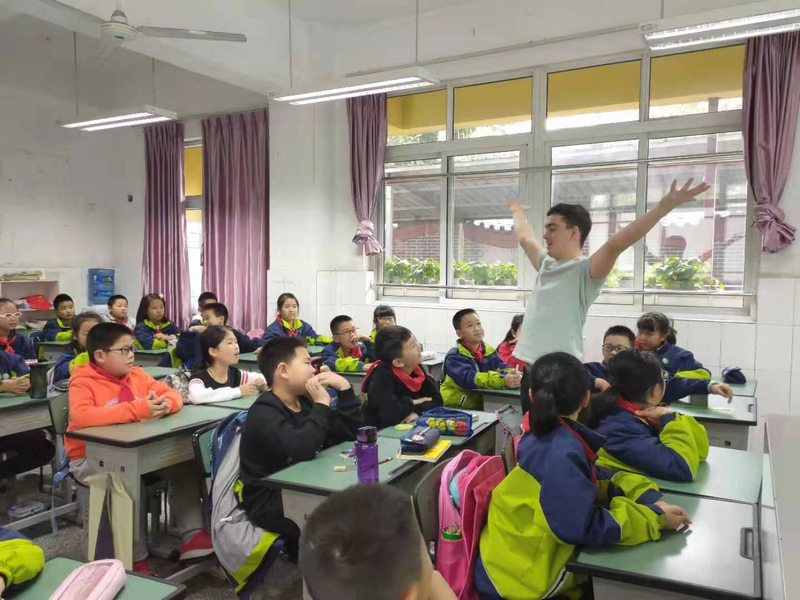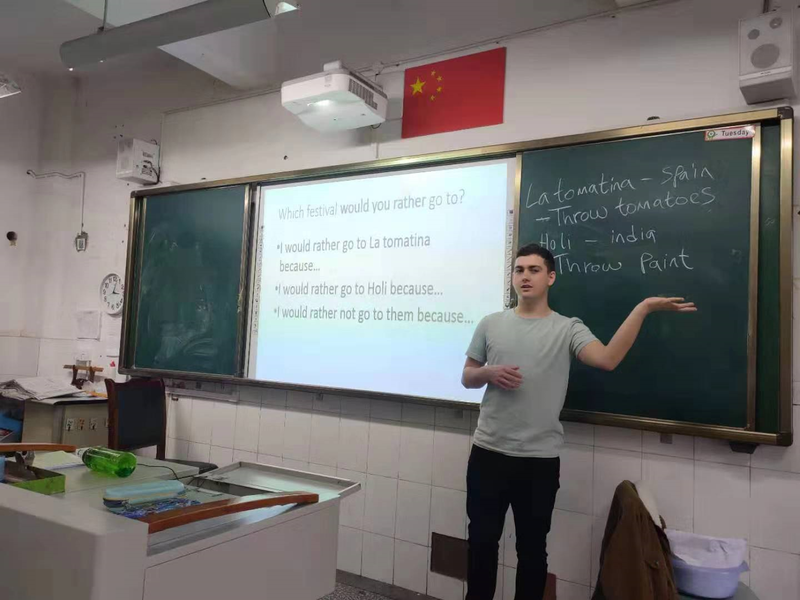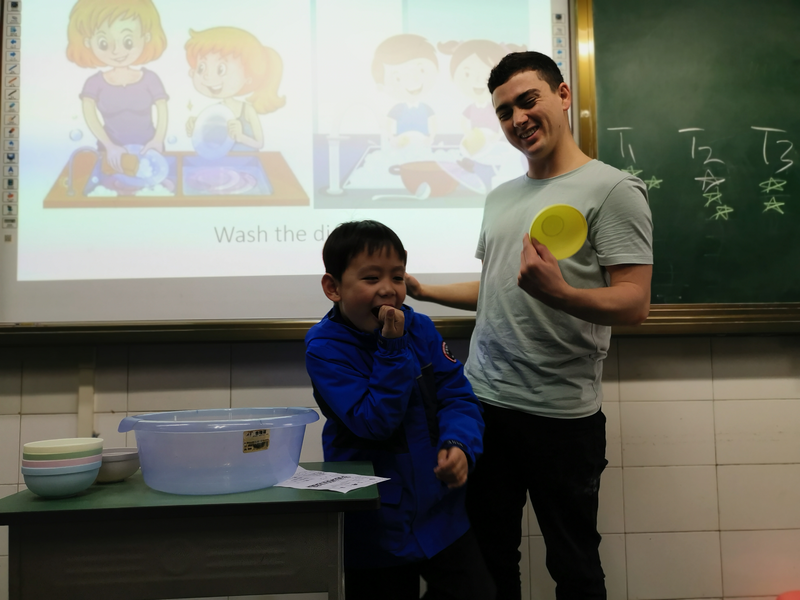It is very important for children in every country to be conscious and aware of different cultures throughout the world. We must educate children in order to bridge the gap between countries and create a more tolerable and understanding world. For this very reason, Shuangliu Experimental Primary school, has the International Understanding curriculum. My role in this curriculum is to use my resources and experience of life outside of China to introduce the children to new concepts, ideas and cultures within an English-speaking environment. For the last 3 months I have been teaching grade 4, 5, and 6 about different aspects of life out-with China. In September I focused on different cultural rules around the world.
The lesson on rules aimed at highlighting how accepted behaviour within your own country may be considered inappropriate in other places. Focusing on countries such as Iran, the UK, Thailand, France, and the USA I took the children through some contrasting norms. I tried to contain each example to a school environment as that is what the children know best. So, after a brief discussion about rules and why we have them, we looked at Iran and how their schools are entirely separated by gender. This was a very popular idea throughout all the grades with both boys and girls voting to have this rule in China (maybe they would regret it after a few years). The lesson was a great way to engage students to voice their opinions about interesting differences between countries around the world. We went on to look at school uniform around the world and behaviours in China that would be very offensive in other countries. This was a good start to the school year as it got children thinking of correct behaviour again. Following from this lesson was a spooky look at a popular festival in Western society.

HALLOWEEN. October featured a description based lesson that focused on getting the children to apply English descriptive words to classic Halloween monsters. I used short clips of monsters such as: vampires, ghosts, mummies, zombies, and werewolves. Following each clip, the children had to then described each of the monsters using words they knew. This helps build a clear set of descriptive words along with being great practice at matching words they know to the correct visual trigger. Halloween is an important and widely celebrated festival around the world. The children enjoyed being able to use their own words to match with the scary movie clips in the class. Following from this festival I decided to showcase a few important and interesting festivals around the world.

The children know of foreign festivals such as Christmas, Halloween, Easter and of course they know the Chinese festivals. However, the world has so much to offer in this area with festivals, big and small, happening all around the world every day. In fact, there is a new travelling trend arising where people travel the world only attending festivals. So I picked 4 festivals to show to the children that are interesting and fun. We looked at Holi (India), La Tomatina (Spain), Carnival (Brazil), Hogmanay (Scotland). Using pictures and video the children were able to see the different festivals and what they were about from throwing tomatoes and paint to dancing, music, dress up and even swim in some cold water. We used the information gained to practice some simple dialogue and some brave children volunteered to try some Scottish dancing enjoyed on the Hogmanay new years celebration in Scotland.

I don’t just teach the upper grades, however. Of course, I teach grade 1, 2 and 3 as well. The focus over the last 3 months has been on building classroom etiquette, personal etiquette, and home etiquette. Building vocabulary and understanding on how to be responsible little people and, eventually, adults. Beginning the school year, in September, with a lesson on simple class rules to ensure the children knew English vocabulary for basic instructions such as “be quiet” and “sit down please”. Following from this lesson, in October we practiced using “please” and “thank you”. The children were able to use these phrases in a practical manner as they held the door open for one and other whilst exchanging the correct nicety. We also practiced using a big toy that the children took great joy in hugging. In November I tried to promote positive behaviour at home. So I entitled the lesson “Let’s help Mum and Dad” or “Let’s Clean” and taught the children 2 or 3 activities based on their grade. We focused on “Wash the dishes”, “Sweep the floor” and “Tidy up my toys”. Each phrase indicates a simple activity that any child can and should do to promote a responsible attitude. Once we learned the phrases the children could try out each activity with items I brought to class (some bowls to wash and toys to pick up). We also played a game that involved throwing balls at the correct picture of the activity after it was spoken. A great lesson that I hope can be continued on.


It’s been a great semester for me and I hope that the children have enjoyed my classes. It is very important for every country to create a curriculum that embraces international understanding and I’m happy to be a part of that curriculum at Shuangliu Experimental Primary School.

